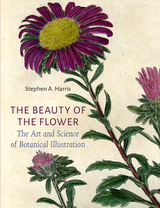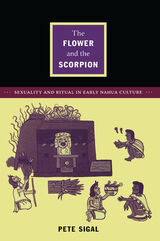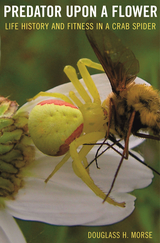3 books about Flower

The Beauty of the Flower
The Art and Science of Botanical Illustration
Stephen A. Harris
Reaktion Books, 2023
Blooming with rare archival images, the story of scientific botanical illustrations over nearly seven hundred years.
In a world flooded with images designed to create memories, validate perceptions, and influence others, botanical illustration is about something much more focused: creating technically accurate depictions of plants. Reproductions of centuries-old botanical illustrations frequently adorn greeting cards, pottery, and advertising, to promote heritage or generate income, yet their art is scientific: intended to record, display, and transmit scientific data. The Beauty of the Flower tells the backstory of these images, showing us how scientific botanical illustrations are collaborations among artists, scientists, and publishers. It explores the evolution and interchanges of these illustrations since the mid-fifteenth century, how they have been used to communicate scientific ideas about plants, and how views of botanical imagery change. Featuring unique images rarely seen outside of specialist literature, this book reveals the fascinating stories behind these remarkable illustrations.
In a world flooded with images designed to create memories, validate perceptions, and influence others, botanical illustration is about something much more focused: creating technically accurate depictions of plants. Reproductions of centuries-old botanical illustrations frequently adorn greeting cards, pottery, and advertising, to promote heritage or generate income, yet their art is scientific: intended to record, display, and transmit scientific data. The Beauty of the Flower tells the backstory of these images, showing us how scientific botanical illustrations are collaborations among artists, scientists, and publishers. It explores the evolution and interchanges of these illustrations since the mid-fifteenth century, how they have been used to communicate scientific ideas about plants, and how views of botanical imagery change. Featuring unique images rarely seen outside of specialist literature, this book reveals the fascinating stories behind these remarkable illustrations.
[more]

The Flower and the Scorpion
Sexuality and Ritual in Early Nahua Culture
Pete Sigal
Duke University Press, 2011
Prior to the Spanish conquest, the Nahua indigenous peoples of central Mexico did not have a notion of “sex” or “sexuality” equivalent to the sexual categories developed by colonial society or those promoted by modern Western peoples. In this innovative ethnohistory, Pete Sigal seeks to shed new light on Nahua concepts of the sexual without relying on the modern Western concept of sexuality. Along with clerical documents and other Spanish sources, he interprets the many texts produced by the Nahua. While colonial clerics worked to impose Catholic beliefs—particularly those equating sexuality and sin—on the indigenous people they encountered, the process of cultural assimilation was slower and less consistent than scholars have assumed. Sigal argues that modern researchers of sexuality have exaggerated the power of the Catholic sacrament of confession to change the ways that individuals understood themselves and their behaviors. At least until the mid-seventeenth century, when increased contact with the Spanish began to significantly change Nahua culture and society, indigenous peoples, particularly commoners, related their sexual lives and imaginations not just to concepts of sin and redemption but also to pleasure, seduction, and rituals of fertility and warfare.
[more]

Predator upon a Flower
Life History and Fitness in a Crab Spider
Douglass H. Morse
Harvard University Press, 2007
In the crab spider, Misumena vatia, Douglass H. Morse and his colleagues found an ideal species on which to test basic questions associated with lifetime fitness. From the moment a female crab spider selects a flower on which to sit and wait for her prey, there unfolds a cascade of lifetime fitness variables that determine her evolutionary success. Did she choose a flower that attracts suitable prey? Will she encounter a competitor or predator? Will she survive long enough to breed, and will her offspring contribute to the gene pool? Ecologists had previously identified variables that shape populations, but lacked the experimental data needed to make comprehensive tests of individuals that made different foraging decisions. Morse found that Misumena is particularly well suited to both field study and laboratory experiments. Over the last 25 years, his simple yet elegant experiments have contributed to our understanding of lifetime fitness and helped to develop study techniques that can be applied to animals with other, more complex, life histories. Predator upon a Flower recounts these influential discoveries in a gracefully crafted narrative that moves ever outward from individuals to communities to ecosystems, and concludes by suggesting directions for future research in spider biology.
[more]
READERS
Browse our collection.
PUBLISHERS
See BiblioVault's publisher services.
STUDENT SERVICES
Files for college accessibility offices.
UChicago Accessibility Resources
home | accessibility | search | about | contact us
BiblioVault ® 2001 - 2024
The University of Chicago Press









